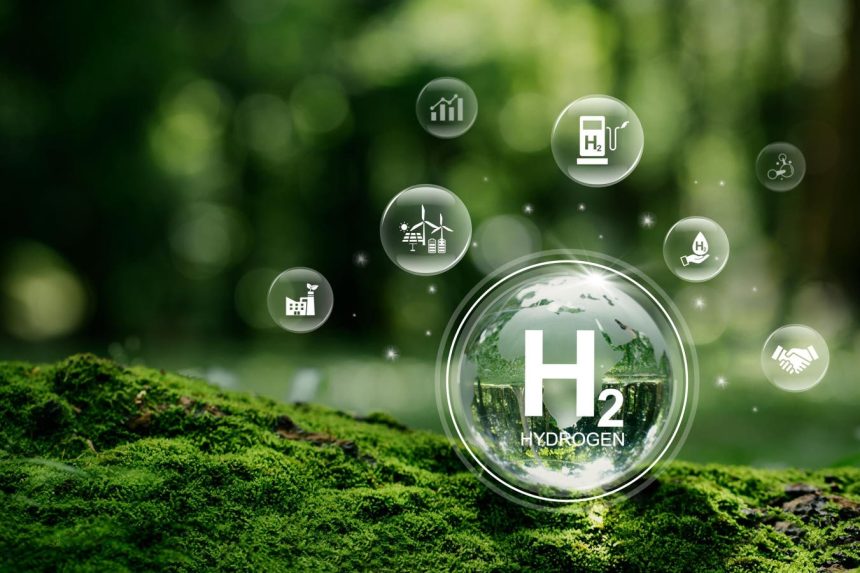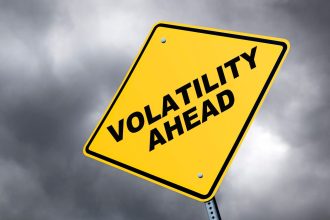With apologies to Henry Cavendish, producing hydrogen in the lab was probably less fraught than producing final rules to implement the section 45V credit. Cavendish won a medal from the Royal Society for his 1766 text, “On Factitious Airs,” describing his work in isolating hydrogen gas, but Treasury and the IRS might be forgiven if they have the impression that their proposed regulations weren’t given a similarly glowing reception.
Ironically mirroring the abundance of hydrogen in the universe, the proposed hydrogen tax credit regulations (REG-117631-23) occupied three days of IRS hearings and were the subject of nearly 30,000 comment letters. The parallel might be less than amusing to the government officials who are charged with producing one set of final regulations with a preamble that addresses the many and varied substantive comments. This article will examine the part of the debate that covers what to do with fugitive methane, as well as the hydrogen hubs’ concerns.
The proposed regulations punted on the use of renewable natural gas (RNG) or other fugitive sources of methane, and the preamble explained that the forthcoming rules will apply to all RNG used for the section 45V credit. It’s expected that the future rules will have conditions for certificates for RNG and fugitive methane that are “logically consistent with but not identical to” the requirements that apply to electricity-derived energy attribute certificates. What is eventually permitted could have a significant effect on whether steam methane reforming facilities with carbon capture can qualify for credits under section 45V.
Methane Emissions
Like all gases, methane leaks out of containers and pipelines through cracks and seams. The methane leakage rate may vary dramatically depending on the variables in any given project, but the 45VH2-GREET
REET
The question is especially important to blue hydrogen production. The Environmental Defense Fund (EDF) pointed to recent projections anticipating that over half of the hydrogen facilities built by 2035 will use steam or autothermal reforming with carbon capture, and over half of the regional hydrogen hubs (more on their comments below) plan to use natural gas to produce hydrogen. The group argued in its comment letter that guardrails are necessary to ensure that the feedstocks and production methods for such facilities are low-emitting.
Several natural gas and affiliated companies argued in a joint comment letter that “the Inflation Reduction Act specifically authorized the GREET model — not a handcuffed version of GREET.” PureWest Energy, Honeywell International
HON
The EDF also advocated for updating the model, but said that the appropriate rates to use are basin-specific leak rates because methane emissions from oil and gas production vary substantially by basin. It noted that measured leak rates for the Permian and Uinta basins have been far above the 0.9 percent default rate, at between 3-4 percent and 6-8 percent, respectively. “Reliance on a single nationwide default methane leak rate obscures these large differences between basins and prevents full and accurate accounting of greenhouse gas emissions burdens of downstream uses,” the EDF said. It asked Treasury to begin a joint agency process with the Energy Department and EPA to facilitate moving to a basin-specific leak rate based on measurements and to update the 45VH2-GREET model annually.
Treasury and the IRS shouldn’t yet allow the use of differentiated gas certificates, Edwin LaMair of the EDF said. Currently, the certification regimes are voluntary. “There are producers that have low methane intensities, but differentiated gas certificates vary in their standards — some are based on direct measurement and some use estimates based on emission factors, for example — and not all operators use them,” he noted. Those variations make it inappropriate to rely on the certificates to evaluate tax credit eligibility, LaMair said. The EDF has recommendations for criteria for certificates that include direct measurement of emissions and an independent verification requirement.
Coal Mine Methane
Coal mines often don’t capture the methane that operational mines must release in order to satisfy safety requirements, and closed mines sometimes continue to leak methane into the atmosphere. The EPA says there are several thousand abandoned coal mines in the United States, and roughly 400 of them are “gassy.” The EPA’s mapping tool of coal mine methane current projects and opportunities shows 45 abandoned mines where projects or opportunities are located and 30 active mines where methane either is now being or could be captured. Coal mine methane is “a significant source of fugitive methane that is frequently overlooked,” but it represents 8 percent of U.S. methane emissions, the Appalachian Regional Clean Hydrogen Hub (ARCH2) explained at the IRS’s public hearing. The area covered by the Appalachian hub has legacy coal mines that emit methane into the atmosphere even though mining activities at the sites have stopped, the hub wrote in its comment letter. A considerable number of the mines identified in the EPA’s mapping tool are in the Appalachian region.
There are companies that would like to capture coal mine methane for use in hydrogen projects. The first productive use requirement would exclude a number of coal mines that previously captured methane, but were taken offline due to unfavorable economic conditions. Also, the 45VH2-GREET model excludes coal mine methane. That’s not the case under the DOE’s 2023 GREET model used for research and development, in which coal mine methane was assigned a very low carbon intensity because of the environmental benefits associated with capture for productive use, noted Michael Moore of the Waste Gas Capture Initiative. That group asked Treasury and the IRS to include the pathway for coal mine methane that is used in the R&D GREET model in the next version of the 45VH2-GREET model.
Hubs Program Giveth, Proposed Regs Taketh Away?
The hydrogen hubs aren’t completely happy with the proposed regs for various reasons, but a recurring theme in their comments is that environmental policy enacted through the tax code ought to differentiate between local characteristics. Thus, ARCH2 in Appalachia wants to ensure that industrial off-gassing and coal mine methane are included and that actual reported greenhouse gas emissions data can be used for reporting carbon intensity. And the Alliance for Renewable Clean Hydrogen Energy Systems (ARCHES) in California argues that “incrementality, temporal matching, and deliverability criteria have irreconcilable problems when applied to aggressive clean-energy states like California.” But tailoring tax regulations based on particular regional characteristics might be tough for Treasury and the IRS to achieve.
ARCH2 wrote that its hydrogen will be primarily blue, but that by building a hydrogen infrastructure for blue hydrogen, it will be ready to utilize green hydrogen when its price comes down. The hub argued that the 45VH2-GREET model “is far too restrictive and not representative of current operations in Appalachia” because it uses average emissions rates that are more reflective of oil-producing regions. But in Appalachia, ARCH2 explained, “natural gas operators in the Marcellus and Utica target primarily natural gas, and since this is their commodity, they are heavily incentivized to minimize their methane losses from production to delivery of their product.” The result is that the rule rewards the lowest-cost natural gas instead of the lowest-emitting natural gas, ARCH2 wrote. In addition, it asserted, “Treasury went further than the legislative intent by prescribing a 45VH2-GREET model specifically tailored to apply to the administration of the tax credit opportunities” when it should have instead relied on the scientific work that went into the GREET model for determining life cycle greenhouse gas emissions rates, regardless of feedstock source.
In California’s case, ARCHES pointed out that incrementality would lead to increased use of diesel instead of green hydrogen because the end use of clean hydrogen isn’t included in the greenhouse gas emissions calculations and the hydrogen ARCHES intends to produce is slated for power plants, diesel trucks, buses, diesel port equipment, and heavy industry. Also, California already requires new power supplies added to the grid to be renewable, which has caused a five-year-plus backlog for renewable projects seeking interconnection, according to ARCHES. The result is that new renewable power facilities for hydrogen would end up at the back of the line. “The incrementality requirements as written will delay hydrogen production, prolong the use of fossil fuel technologies that could be replaced by renewable clean hydrogen, and reduce the number of family-sustaining jobs,” ARCHES wrote.
ARCHES also objected to the proposed regs’ time-matching requirement on the grounds that California’s Renewable Portfolio Standard requirements ensure significant renewable resources. “Hourly matching imposes substantial added expense, reduced flexibility, and uncertainty for project financing, without corresponding emission benefits,” the hub wrote. Its solution is to require hydrogen facilities to use the same time-matching system that their resident states apply to other carbon-free technologies, such as batteries.
Meanwhile, representing the Gulf Coast, the HyVelocity Hub requested that the final rules mostly delay the implementation of incrementality, temporal matching, and deliverability until between 2030 and 2032, and that clean hydrogen producers be able to use their own carbon intensity data for their natural gas sources rather than the national average used in the 45VH2-GREET model. HyVelocity also requested that all feedstock sources of RNG be made fully eligible, that book-and-claim accounting be permitted for RNG, and that the natural gas market be exempted from incrementality, time matching, and deliverability. The hub noted that RNG pipelines are national and production is continuous, so the concerns underlying the deliverability and time-matching requirements for electricity “are not relevant.” As for the use of book-and-claim accounting, HyVelocity would like hydrogen facilities to use existing substantiation and documentation protocols under the Renewable Fuel Standard and California’s Low Carbon Fuel Standard program.
The comment letters also include appeals for leniency written by piquantly named companies like Hornblower Energy, a marine industry company that envisions placing small hydrogen facilities dockside in order to fuel vessels. Hornblower doesn’t acknowledge its literary namesake in its comment letter, but Horatio Hornblower — and the novels about him by C.S. Forester, whose work Ernest Hemingway recommended to “everyone literate I know” — commanded the ultimate in clean-energy vessels: a sailboat. Like that good midshipman, Treasury and the IRS will have to navigate rough waters in their campaign to release the final regulations.
Read the full article here














